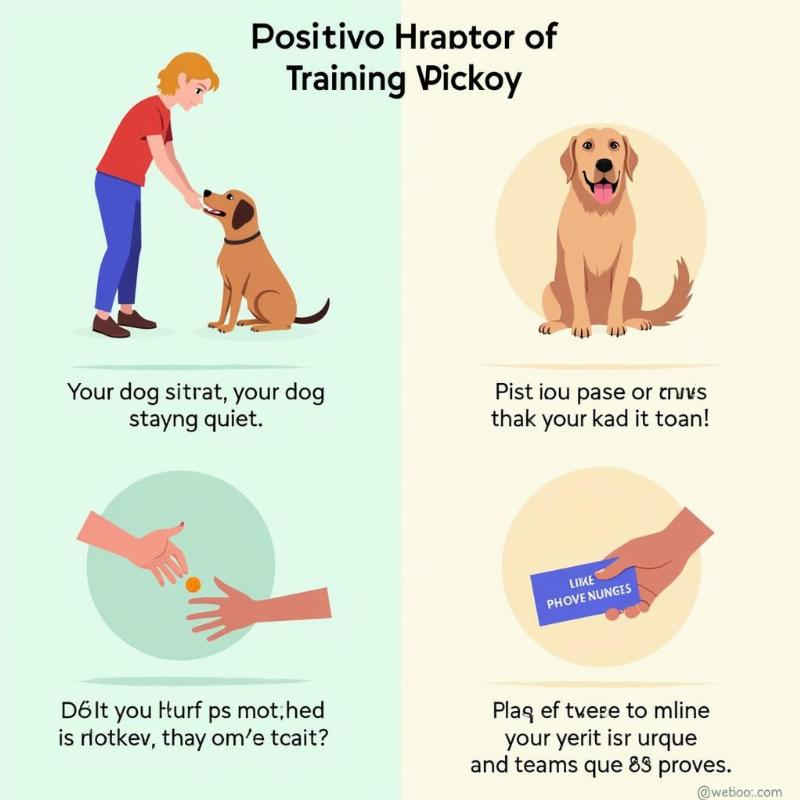Dog whining can be frustrating, but using a shock collar should be a last resort. Before considering a shock collar for whining, it’s crucial to understand the reasons behind your dog’s behavior and explore more humane and effective training methods. Addressing the root cause of the whining is key to resolving the issue long-term. This article will explore the complexities of using a shock collar for whining, alternative training techniques, and how to prioritize your dog’s well-being.
Many dog owners consider a shock collar for whining out of desperation. However, it’s important to understand the potential negative impacts of using these devices. Shock collars can cause physical pain and psychological distress, potentially leading to increased anxiety and fear-based behaviors. They can also damage the relationship between you and your dog, eroding trust and creating negative associations. Instead of addressing the underlying cause of the whining, shock collars simply suppress the behavior, which can lead to other unwanted behaviors surfacing.
Understanding Why Your Dog Whines
Before considering any intervention, it’s crucial to understand why your dog is whining. Is your dog whining due to pain, anxiety, excitement, or simply seeking attention? A thorough veterinary checkup is the first step to rule out any underlying medical conditions. Once medical issues are addressed, you can focus on behavioral reasons.
Common Reasons for Whining:
- Pain or Discomfort: If your dog is experiencing pain, whining is a natural way to communicate this. Observe for any other signs of discomfort, such as limping, changes in appetite, or excessive licking.
- Anxiety or Fear: Separation anxiety, fear of loud noises, or unfamiliar environments can trigger whining. Look for accompanying signs like pacing, panting, or destructive behavior.
- Excitement: Whining can also be a sign of positive excitement, such as when anticipating a walk or playtime. This type of whining is usually accompanied by a wagging tail and playful body language.
- Attention-Seeking: If your dog has learned that whining gets them attention, they may use it as a way to solicit petting, treats, or playtime.
 Training a dog not to whine
Training a dog not to whine
Alternatives to Shock Collars for Whining
There are numerous humane and effective alternatives to using shock collars for whining. These methods focus on addressing the root cause of the behavior and teaching your dog alternative ways to communicate.
Positive Reinforcement Training:
Reward your dog with treats, praise, or toys when they are quiet. This encourages them to associate silence with positive outcomes.
Addressing Underlying Anxiety:
If anxiety is the cause, create a calm and predictable environment for your dog. Consider using calming aids like pheromone diffusers or anxiety vests. Consult with a certified dog trainer or veterinary behaviorist for professional guidance. calming e collar for dogs can be a suitable alternative.
Ignoring Attention-Seeking Whining:
If your dog is whining for attention, do not give in. Ignore the whining and only give them attention when they are quiet. This teaches them that whining will not get them what they want.
Providing Sufficient Exercise and Mental Stimulation:
A tired dog is less likely to whine out of boredom or frustration. Ensure your dog gets enough physical exercise and mental stimulation through walks, playtime, and interactive toys. how to stop your dog barking at night can also help you understand the reasons and solutions to excessive barking.
When to Consult a Professional
If your dog’s whining persists despite your efforts, it’s important to consult with a certified dog trainer or veterinary behaviorist. They can help identify the underlying cause of the whining and develop a tailored training plan. You could also consider a proximity shock collar for dogs for training purposes, under the guidance of a professional. shock collar for whining dogs should only be considered after exhausting all other options and with guidance from a professional.
Conclusion
While a dog shock collar for whining may seem like a quick fix, it’s crucial to prioritize your dog’s well-being and explore more humane and effective solutions. By understanding the reasons behind your dog’s whining and implementing positive training techniques, you can address the root cause of the behavior and strengthen your bond with your furry friend.
FAQ
- Is it ever okay to use a shock collar for whining? Shock collars should be a last resort and used only under the guidance of a certified professional after exhausting all other options.
- What are the risks of using a shock collar? Shock collars can cause physical pain, psychological distress, and damage the relationship between you and your dog.
- What are some alternatives to shock collars? Positive reinforcement training, addressing underlying anxiety, ignoring attention-seeking whining, and providing sufficient exercise and mental stimulation.
- When should I consult a professional? If your dog’s whining persists despite your efforts or if you’re unsure about the best course of action.
- How can I tell if my dog is whining due to pain? Look for other signs of discomfort like limping, changes in appetite, or excessive licking. Consult your veterinarian for a thorough checkup.
- Can whining be a sign of excitement? Yes, whining can also indicate positive excitement, such as anticipating a walk or playtime.
- How do I stop my dog from whining for attention? Ignore the whining and only give attention when they are quiet.
Beautdogs.us is your trusted source for comprehensive dog care information, breed expertise, and product recommendations. Whether you’re a new dog owner or a seasoned pro, we offer expert guidance and valuable resources to help you navigate the joys and challenges of dog ownership. We specialize in connecting you with the best products and services for your furry companion. Learn more about how we can help you and your dog live a happier, healthier life together! Contact us today at [email protected] or +1 501-555-7529. Beautdogs.us is committed to providing the best for your beloved pet.